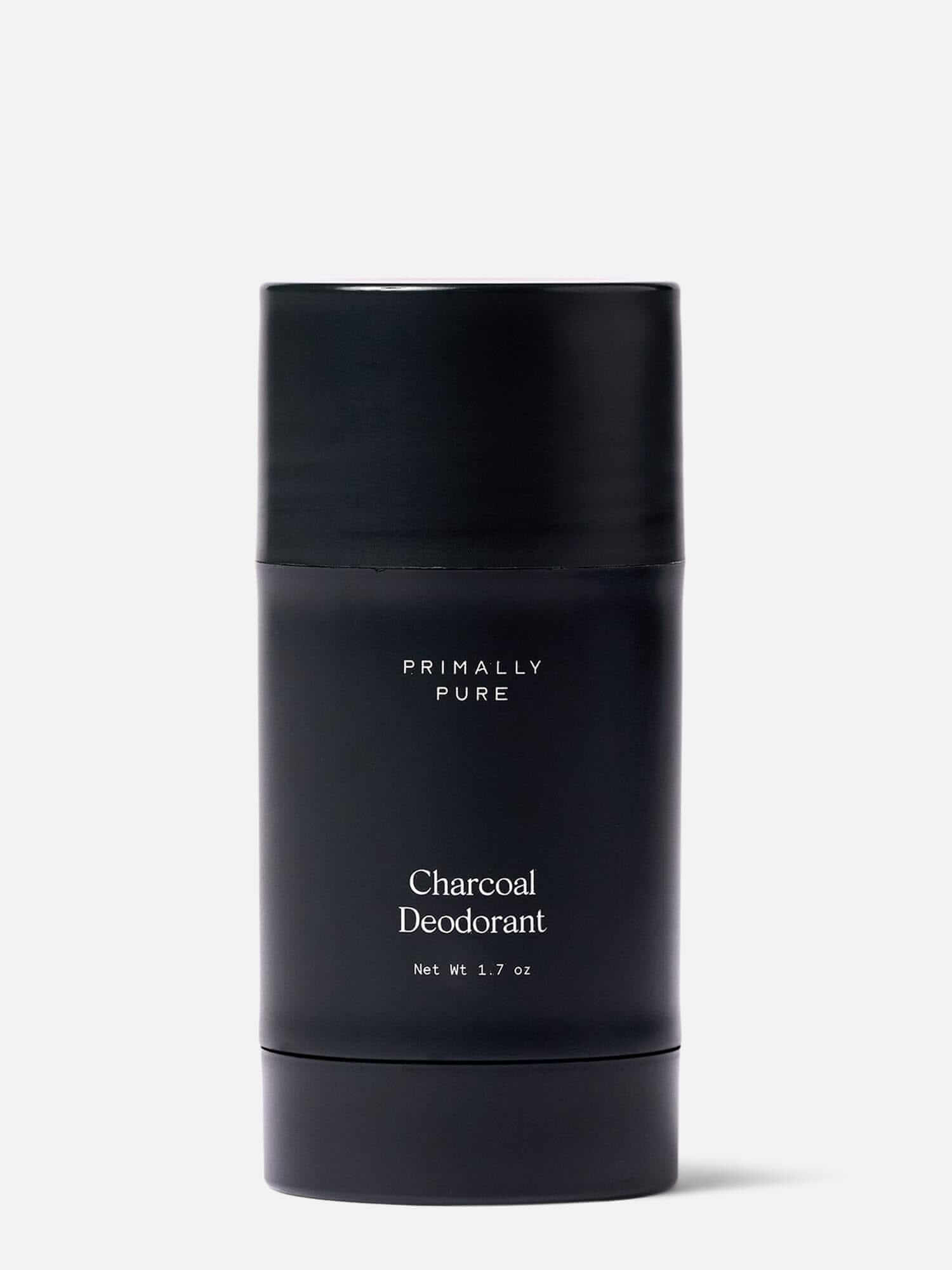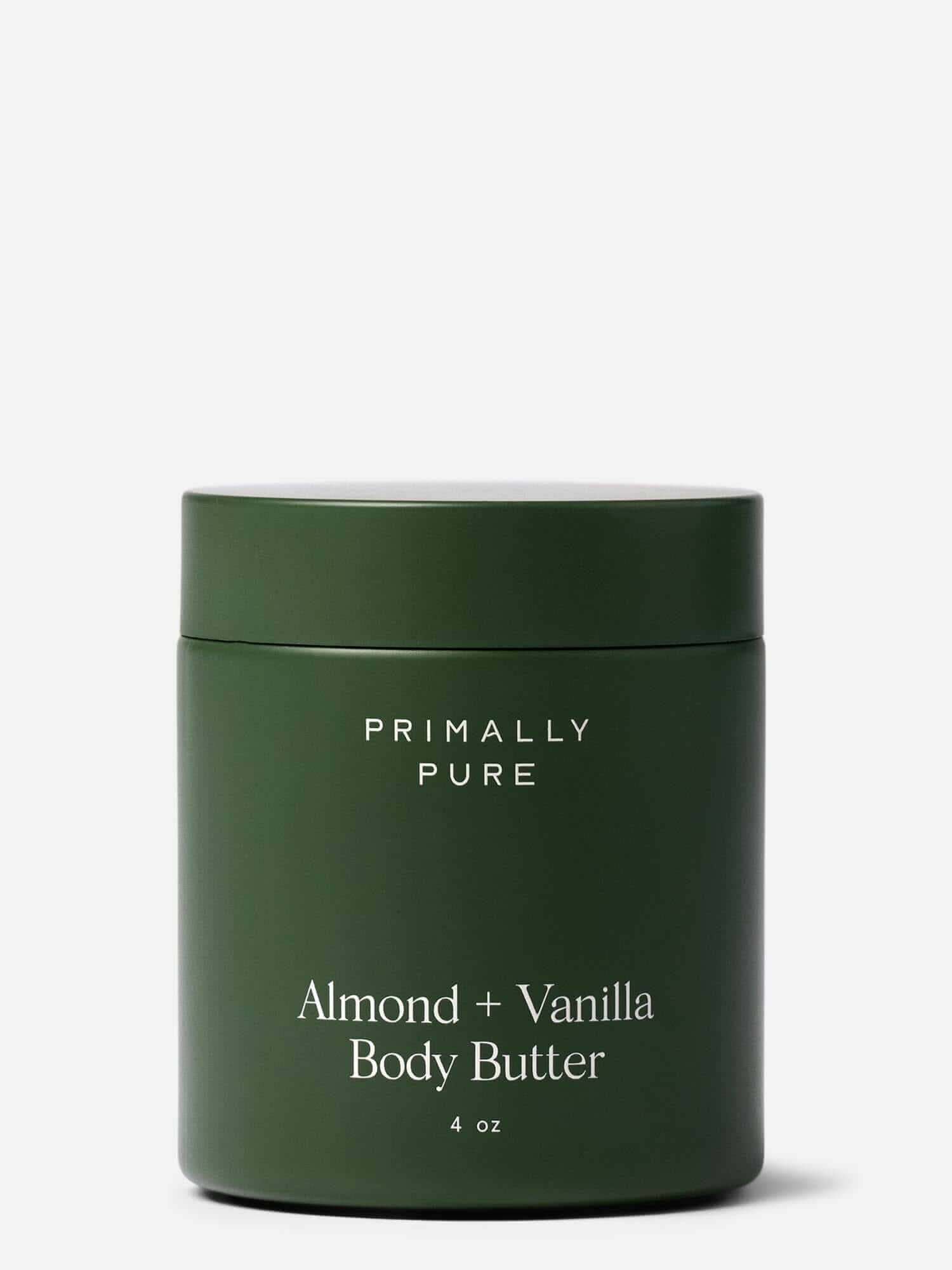Why Tallow Skincare Is Causing So Much Buzz (and Backlash)
Summary
Uncover the truth behind the tallow skincare debate: why this ancestral ingredient is sparking controversy and making a comeback in the beauty world.
-
Grass-fed tallow skincare is rich in bioavailable fatty acids (oleic, palmitic, stearic) that mimic skin’s natural sebum, helping repair the skin barrier, lock in moisture, soothe irritation, and support elasticity better than many plant oils.
-
Concerns that tallow is comedogenic or harmful to the environment often come from misinformation—quality depends on sourcing and formulation. Properly rendered, nutrient-dense tallow supports healthy skin without clogging pores.
-
Primally Pure uses only 100% grass-fed and finished tallow, sourced ethically and minimally processed, ensuring clean, non-toxic, sustainable skincare that’s both effective and environmentally conscious.
Tallow skincare may be trending now, but for us, it has always been the foundation. Long before it went viral (and sparked endless debate), we knew tallow held serious skin-healing potential.
Derived from the Latin word for sebum (aka your skin’s natural oil), tallow has been at the heart of our formulations for over a decade.
Tallow was once a household staple in America – used for everything from skincare to cooking. Over time, many started trading it – especially in skincare – for synthetic + lab-made alternatives.
But today, tallow skincare is making a well-deserved comeback.
In this post, we’re diving deep into:
→ What makes tallow so effective – and why it’s so misunderstood
→ How it works with your skin at the cellular level
→ The truth behind comedogenic claims
→ How to spot truly high-quality tallow skincare
But first, what exactly is tallow, and why is it so popular right now?
What Is Tallow + Why Is Tallow Skincare Everywhere?
It may seem like a random new trend, but tallow has a long history as a skin-nourishing powerhouse.
Tallow is a form of fat derived from ruminant animals like cows or sheep. The suet, or fat surrounding their organs, is gently melted away and then cooled. Tallow is naturally rich in saturated fats, making it particularly dense in nutrients and healing properties for the skin.
Historically, tallow held a variety of purposes, like:
- Cooking (especially high-temp, like frying)
- Crafting candles
- Healing salves
- Skincare
This multitasking hero was everywhere in ancient times. And it was still widely used and loved up until just a few generations ago.
So what happened?
Manufacturers found a cheaper option.
Instead of being truthful, marketing companies started saying saturated fats were bad for your health. (This is a narrative that is still being unwound today in profound ways.) These greenwashing tactics aimed to make the common consumer believe that they should replace tallow with “healthier” fats.
But the so-called healthier fats were just oxidized, rancid seed oils, called "vegetable oil.”
→ As for the personal care industry, tallow skincare became overshadowed by synthetic ingredients that promised faster results, flashier claims, and easier mass production. But those promises rarely delivered and often came with harsh chemicals that disrupted the skin (and overall health) more than they helped it.
Today, both of these narratives are shifting as consumers are starting to ask better questions. Animal-based skincare (and diets) are making a comeback. Many are returning to the power of a simpler, more ancestral lifestyle.
And many are realizing that the key to a healthy body (and skin) often lies in returning to the basics. Steeped in tradition and wisdom, tallow skincare aligns perfectly with the biological design we all share: to live in closer harmony with the earth.
Its nutrients and fats uniquely match your skin’s sebum, supporting the lipid profile and creating a more resilient skin barrier. A healthy skin barrier is the foundation of healthy skin.
But let’s be real: tallow skincare has stirred up its fair share of controversy. So let’s start by clearing the air. ;)
Tallow Skincare: Myth Busting
As a non-toxic skincare company, we’ve been using tallow in our skincare products for over a decade, long before the trends. At the root, almost all the concerning claims you hear come back to two critical factors: quality and formulation.
When sourced and formulated properly, tallow is one of the most nourishing and skin-supportive ingredients available. To show you how, let’s tackle a few of the most prevalent claims.
“Tallow Is Comedogenic”
This is a common concern, even within conventional dermatology circles. While well-meaning, many of these claims lack context and logic on tallow-based skincare. Without taking the full picture into account, they’re demonizing tallow as a dangerous + pore-clogging ingredient.
But when we put context against this claim, it starts to make sense.
Comedogencity isn’t just about one ingredient; it’s the whole product and its formulation.
So, for people who have experienced tallow skincare as pore-clogging or comedogenic, it’s essential to consider the bigger picture.
Because, as we know, the state of your skin is multifaceted. It’s not about a single product or ingredient. It’s about your whole routine – and how it is (or isn’t) caring for your skin barrier.
That’s why pure tallow can behave differently from well-formulated tallow skincare, with tallow as the base. Our in-house formulator, Tommi, explains it best:
"Tallow is just one part of the overall formula, not the whole story. We wouldn’t recommend making decisions based on how 100% pure tallow affects your skin, because our products are carefully balanced with complementary ingredients. Some people might love pure tallow, others might not, but that’s completely different from how our formulas perform."
Here’s another way to look at this:
→ Harsh exfoliants or stripping cleansers can throw off your skin’s oil production. If you’re using tallow but pairing it with products (and/or practices) that disrupt the skin's barrier, your skin may still overproduce oil, leading to clogged pores or breakouts.
Like anything, skincare or not, we believe a holistic approach is key. You should always consider the bigger picture of how you’re treating your skin, both inside and out.
Plus, the proof is in the pudding. ;)
Many of our customers say tallow was the turning point in their acne healing journey. If it were truly so pore-clogging… well, we wouldn’t be here. ;)
“I noticed an improvement in my skin (hormonal acne girlie) within a few days. I'm hooked!” – Keely
“It’s so hydrating and perfect for sensitive skin and hormonal acne-prone.” – Heather
But all joking + sass aside, we know it may feel counterintuitive to some to put an oil-based product on your face. However, with its unique composition that matches your skin’s natural oil, tallow-based skincare actually regulates oil and sebum production. The ripple effect is beautiful – it allows your skin to return to homeostasis, heal more easily, and build a stronger lipid barrier.
We asked our holistic esthetician, Courtney, her thoughts on tallow + comedogenicity, too, and here’s what she said:
"With what we know about tallow and the makeup of the skin, it’s a synergistic match that supports everything from acne to aging. Grass-fed tallow contains essential fatty acids that are foundational for optimal skin function. Plus, the fat composition is extremely similar to our own sebum, making it highly biocompatible and beneficial for the skin’s lipid barrier. When you nourish skin at the cellular level, you’re going to experience even more impactful results."
Oh, and want in on a (not so secret) secret? Every moisturizer on the market is trying to [synthetically] replicate the composition that tallow has naturally.
Case rested.
“Tallow-Based Skincare Is Bad for the Environment.”
Given the narrative against meat and animal protein, it’s not surprising that this is a common claim in tallow skincare. And while there’s some truth to it, it’s all about context.
Let’s break it down.
Yes, conventionally raised cows can indeed be harmful to the environment. But when cows are raised the right way, with respect for the earth and the intelligent interplay between nature and the animal, it benefits the environment.
When cows are raised on pasture with regenerative practices (aka, the “old-fashioned” way), it allows the farmers to interfere less with nature’s innate design. Here’s how ethically raised cattle contribute to soil health and biodiversity:
→ Cow manure acts as a natural fertilizer, allowing farmers to forego chemical fertilizers
→ Allowing cows to roam on pastures naturally aerates the soil
→ Grazing + rotational patterns naturally maintain grass
→ Regenerative soil absorbs more carbon and holds more water
Compare that to monocropping, which strips the soil of nutrients, harms wildlife, and leaves us with crops devoid of any real nutrient density.
Plus, it’s worth noting that tallow is also a sustainable byproduct of cattle farming. Because it comes from fat attached to the skin, it utilizes a part of the cow that would otherwise be discarded during processing.
Bottom line? The environmental impact depends on the type of tallow used in your skincare. The good news: our tallow skincare only contains grass-fed and finished, high-quality, ethically sourced tallow. (But more on that later.)
SHOP: Tallow Skincare
The REAL Truth About Tallow for Skin
While it’s easy to fall victim to these claims about tallow skincare, we’re here to set the record straight. After 10 years of using tallow in our skincare + countless 5-star reviews for all of our tallow products, here’s what we know to be true about tallow:1,2
- Locks in moisture + hydrates
- Softens skin
- Supports skin integrity + structure
- Creates a strong skin barrier + resistance to environmental stressors
- Antimicrobial properties
- Absorbs deeply + transports other nutrients even deeper
- Soothes inflammation + redness
- Especially beneficial for dermatitis, psoriasis, dry skin, and wounds
- Gentle enough even for sensitive skin
- Reduces oxidation
- Increases elasticity
All of these properties, combined with tallow’s shelf stability and durability in heat and UV exposure, make it a far better alternative to unstable industrial seed oils, which are often used as the base in skincare formulas.
*Note: We’re not opposed to all seed oils – only industrialized ones. This distinction is key – and the reason our formulas only use cold-pressed seed oils, preserving nutrient integrity.
So, how can one ingredient do all that? Let’s take a look under the surface. ;)
Tallow’s Best-Kept Secret: It’s Fatty Acid Profile
We could talk all. day. long about the fatty acid profile of tallow.
Here’s why.
Tallow is often praised for its vitamin content – vitamins A, D, E, and K. But recent research and deeper conversations with our suppliers revealed there’s something even more impressive. It contains a *perfectly balanced* fatty acid profile that mimics our skin. This really unique blend of skin-compatible fats allows it to nourish, protect, and restore your skin at the cellular level.
Simply put, fatty acids are the literal building blocks for your skin. They create the structural component of lipids, which form your skin barrier.3
As our founder, Bethany, often points out when discussing tallow skincare, our cell membranes are primarily composed of fats. In terms of our diet, fat plays a major role in cellular function.4 So, naturally, it would only make sense that animal-based skincare (with a similar fat profile to our own sebum) would improve the function and health of your skin when applied topically. Fatty acids are also key in delivering other botanicals + nutrients even deeper into the skin.
Lastly, since fatty acids work at the cellular level, they are beneficial for all skin states. Pretty incredible, right?
Let’s nerd out for a minute and look at how all these fatty acids work together in tallow skincare to bring you glowing, radiant skin.
-
Saturated fatty acids
→ Palmitic acid: seals in moisture + improves texture
→ Stearic acid: improves elasticity + suppleness
→ Myristic acid: emollient and protective, helping to regenerate the moisture barrier5
-
Monounsaturated fatty acids
→ Oleic acid: deeply moisturizing and emollient
→ Palmitoleic acid: optimizes other fatty acids + promotes healthy skin
-
Polyunsaturated fatty acids
→ Linoleic acid: prevents water loss
→ Linolenic acid: reduces inflammation and strengthens skin6
→ Conjugated linoleic acid (CLA): provides anti-inflammatory effects that reduce oxidation + contains anti-cancer properties7
From a skincare standpoint, this is an optimized profile of fatty acids. It’s exactly what you want for soothing, nourishing, and supporting skin. But at the end of the day, tallow skincare (and its fat and nutrient profile) is only as good as the sourcing standards.
Our Sourcing + Processing Standards
Ever heard the phrase the devil’s in the details?
Our strict sourcing and standards make all the difference in the quality – and results – of our tallow skincare products. We don’t cut corners. Because when it comes to ingredient integrity, shortcuts simply aren’t an option.
Because if you’re not sourcing from quality suppliers, you don’t have high-quality ingredients or products. Here’s what sets us apart from the rest of the tallow skincare world: we source ONLY the highest quality ingredients.
These are just a few of our standards that make our tallow skincare superior:
-
Our tallow skincare contains only 100% grass-fed + finished tallow from cattle born and raised in the U.S. This creates traceable care and standards. When cows are fed a biologically appropriate diet, they’re healthier animals that produce more nutrient-dense tallow. Our tallow comes from completely grass-fed cows that have never been given:
- Antibiotics
- Hormones
- Grains
- Starches
- Animal byproducts
-
Our tallow skincare is made exclusively with tallow from humane farmers, which means the animals are treated with respect, handled with care and consideration, and live in suitable environments. Our farmers must be intentional and ethical in their entire business model, without exception. And because tallow is naturally a by-product, it honors the life of the animal by letting nothing go to waste.
-
All of the farmers we source from prioritize regenerative farming, in line with our soil-to-skin philosophy. And if we can’t source it in a way that respects the earth and animals while providing a high-quality ingredient, we won’t do it. This includes responsible farming practices like:
-
- Rotational/adaptive grazing
- Pasture-raising animals, year-round
- Using compost + organic input instead of fertilizers
-
Reduced till or no-till
-
Our tallow comes only from the pure suet around the kidneys. Most tallows use mixed fats, which lowers the melting point and compromises consistency. The kidneys are the cleanest + most nutrient-rich fat available. The stable texture also means it holds well, eliminating the need for synthetic stabilizers in our tallow skincare.
-
Our tallow is extremely pure, meeting even the highest standards for culinary use. Yep, you could *technically* eat this. It’s as clean as it gets!
-
Our tallow skincare only includes chemical-free processing methods. Many tallow brands take shortcuts with chemical processing or high heat, which can be damaging.7 (Other practices often include overfiltering, hydrogenation for shelf stability, or adding undisclosed animal by-products or oils.)
We’re grateful to have relationships with such high-quality suppliers who help ensure our tallow skincare contains only the purest + most potent tallow.
Our Tallow Skincare
From the beginning, our Founder, Bethany, knew tallow deserved a spot in our products. The undeniable benefits, real-life testimonies, and long history as a multipurpose hero made it a clear choice.
We owe a lot to the power of tallow. It’s a foundational part of why many of our products are so effective + nourish the skin so well. We specifically love how tallow has the unique ability, as an animal-based ingredient, to enhance the benefits of other nutrient-dense botanicals and essential oils.
And though there may be “talk” around tallow skincare, our formulations are (and always have been) crafted with utmost care. As a staple ingredient in many of our products, it’s safe to say: our tallow skincare isn’t going anywhere. ;)
SHOP: Tallow Skincare
More Than a Moment: Why Tallow Is Here to Stay
From ancestral wisdom to modern skin science, tallow skincare provides the best of both worlds. Its unique fatty acid profile, biological compatibility, and rich skin-healing potential are exactly why it’s been at the core of our formulas since day one.
Whether you’re new to tallow skincare or simply ready to upgrade to the highest quality version, we hope this guide has helped you understand why this timeless ingredient deserves a permanent place in your skincare routine.
XO
Sources:
- National Library of Medicine | Tallow, Rendered Animal Fat, and Its Biocompatibility With Skin: A Scoping Review
- Mayo Clinic Press | What Is Beef Tallow? Is It Good for Me?
- Science Direct | Skin Lipids in Health and Disease: A Review
- Cleveland Clinic | Omega-3 Fatty Acids
- The Derm Review | Acids in Skincare
- National Library of Medicine | Topical Application With Conjugated Linoleic Acid Ameliorates 2, 4-Dinitrofluorobenzene-Induced Atopic Dermatitis-Like Lesions in BALB/c Mice
- National Library of Medicine | Conjugated Linoleic Acid, Unlike Other Unsaturated Fatty Acids, Strongly Induces Glutathione Synthesis Without Any Lipoperoxidation
- Research Gate | Beef Tallow: Extraction, Physicochemical Property, Fatty Acid Composition, Antioxidant Activity, and Formulation of Lotion Bars
Save this post to your favorite Pinterest board for future inspo:






Leave a Comment